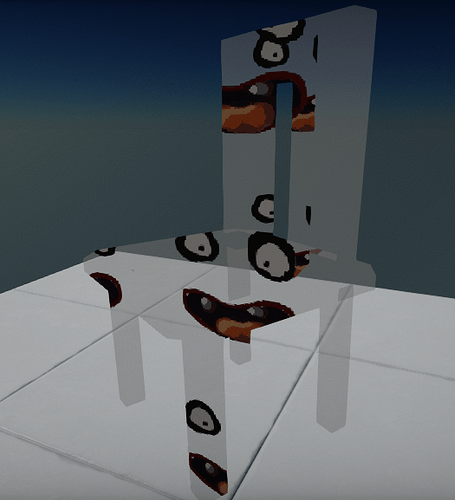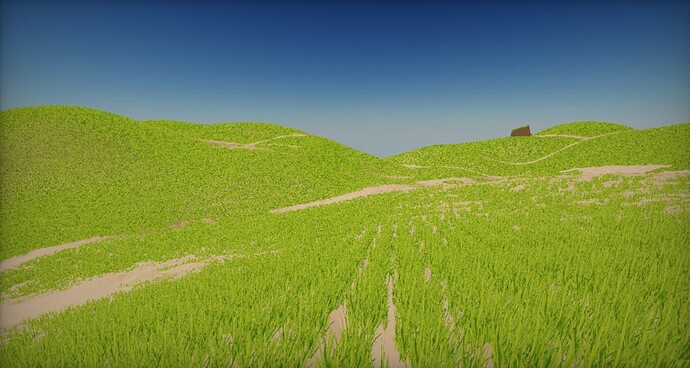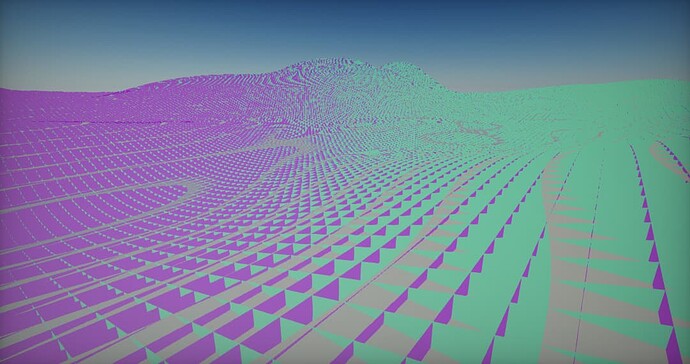In the last months I got a little distracted from my game project and tried to come up with a solution to one of my most aching problem with modern rendering. Especially in regard to recent Unreal-Engine fads to completely throw overboard all subtle artistic sense and to just agree on Quixel Megascans to be the one ultimate way to present better looking landscapes, nature and the likes.
As impressive as it looks it is a hilarious overkill and absolutely nothing you can work with as an artist beside just copy things. It is in analogy to the step from paintings to photographs.
The question arise: How can you render many stupid, small, random things like small rocks and foliage in a landscape without providing painstakingly crafted 3D-Models for it that need to be reduced to an unrecognisable and badly lit geometric cube-thingy as soon as the distance and amount would kill performance? How can you get the feel of such things and don’t completely kill flexibility.
You can try to project a sprite in 3D space.
Hey, this is stupid! Why the heck should I use such a monstrosity of a shader when I can just use a flat 3D model for my sprites and billboard like every game with sane graphic programmers do?
Let me explain…





